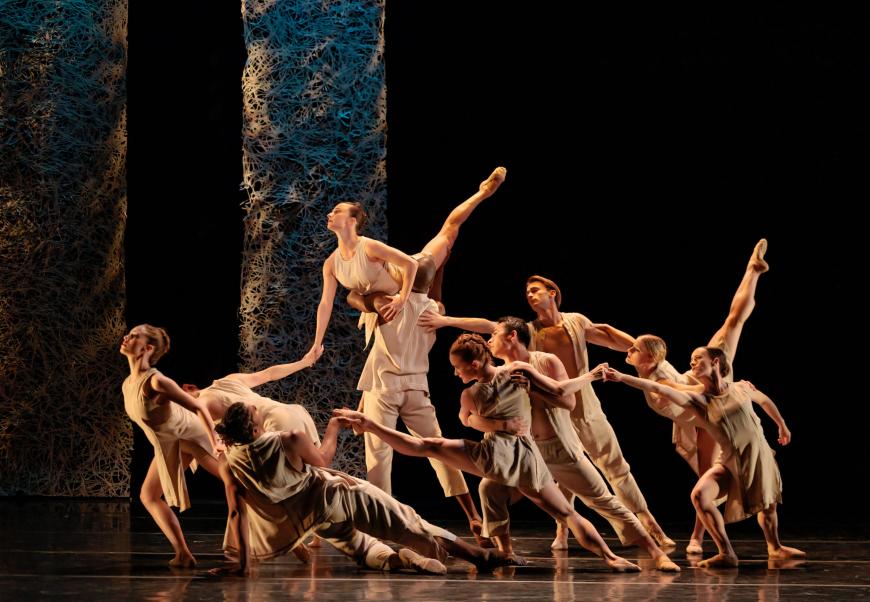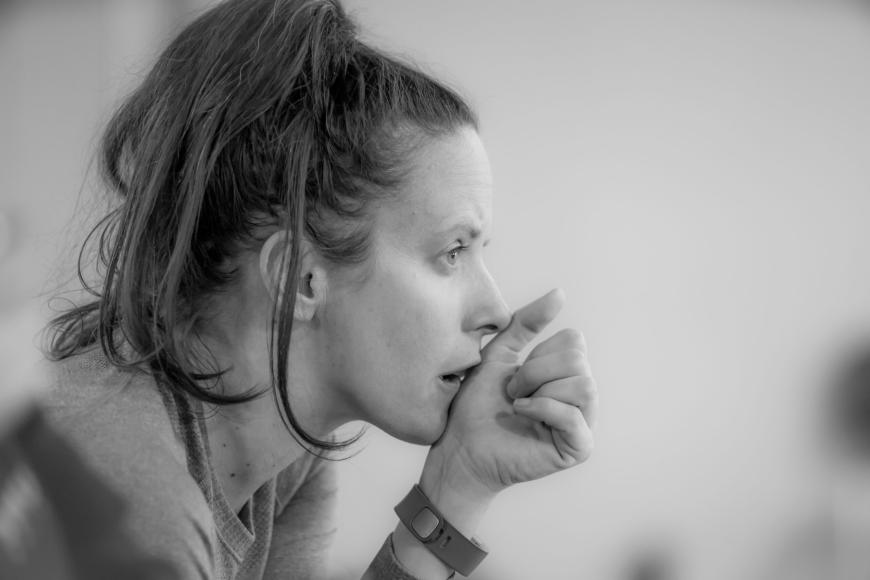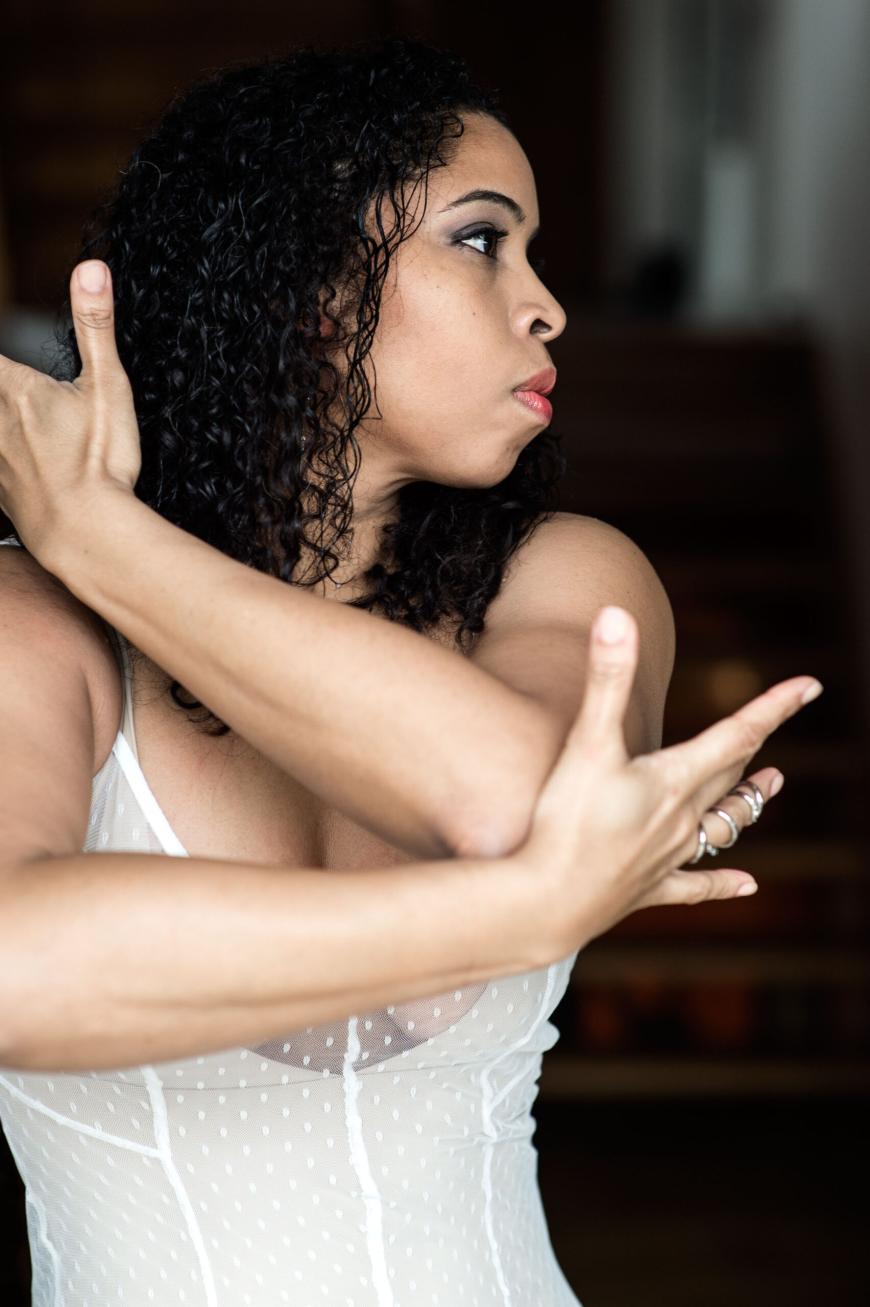
When Smuin Contemporary Ballet opens its 31st season, on Sept. 13 in Mountain View, the troupe will be revealing a new look. Amy Seiwert, formerly both a dancer and choreographer with the company, has recently taken on the role of artistic director from now-retired Celia Fushille. For her inaugural season, Seiwert has brought in Jennifer Archibald to create a new ballet, ByCHANCE, for the dancers and has also invited Matthew Neenan to restage his The Last Glass for the troupe. A reprise of Seiwert’s own Renaissance, from 2019, rounds out the bill. The company will also be performing through Oct. 20 in Walnut Creek and San Francisco, continuing its long tradition of performing in the greater Bay Area.
As a child, Seiwert had years of ballet training in Cincinnati before arriving in California to dance with Sacramento Ballet. Eight years later, in 1999, she joined Smuin Ballet, where she danced until 2008 and then took on the choreographer-in-residence duties until 2018. During that time, she also worked as a freelance artist for many other ballet companies, was artistic director for Sacramento Ballet from 2018 to 2020, and started her own troupe, Amy Seiwert’s Imagery, in 2011, remaining there until its final season in 2024, when she stepped into her new job.
In an in-person interview, Seiwert elaborated on her latest position and how she arrived there.

“Last year, I had six world premieres in six months. They weren’t all made in the span of six months, but it was insane the way the actual premiere dates lined up. At one point, I’m wondering, ‘what city am I in?’ I love doing that, but as I age it’s physically very challenging and I have less desire to live in hotel rooms for six months out of the year. So, the idea of being in one place, at one time, working with one consistent group of dancers, and also fostering and generating opportunity for other people is something that’s very exciting.”
While predecessor Fushille’s approach was to commission new works for the company and preserve Smuin’s choreographic legacy, Seiwert says, “If I look at these two legacies — creation and curation — I feel that I can actually carry both of those forward. I’m very interested in developing opportunity for emerging voices. This is about giving [choreographers] space and resources to play, to experiment, to grow.”
The choice of Archibald to work with the company reflects those priorities. Although the choreographer has a background in classical ballet, she also has interests in a much broader spectrum of movement.

In a telephone exchange, Archibald delved deeply into her individual process of choreographing. To the question “How did you evolve in the way you create work? she answers, “That’s such a layered question. I come from a strong improvisational background, so my ability to improv and paint on the spot definitely influences the level of trust that I bring into a space with the dancers. I can potentially be giving them prompts and also [giving them] a structured improv with a lot of phrasework within it. But I always make sure that there’s enough space for the dancer(s) to be able to stylize or put their thumbprint on it so that they can bring their own personality and their own vulnerable body into the work.”
“I think my background in teaching definitely influences [my method]. The work that I was doing at Yale with actors influences my choreographic process. You’re meeting all these different personalities and when you’re in academia, you walk into these professional ballet spaces and you want to make sure that you are still learning from each other. I try to set up a creative environment that allows for that exchange.”
“You know, not everybody is so reflective. I never walk in where it’s got to be put in this perfect package and then we’re going to execute it and then we’re going to create a product.
Generally, I’m walking into new spaces and learning about new dancers and making sure that the work reflects these company dancers in a really fresh and unique way. When they know that you’re getting a new work created on them, there’s a different investment in the sense [that] I’m really going to make this dancer look good because they’re owning this phrase work.”
“I had an acting teacher that used to tell me, ‘you just got to keep your eyes open and really make sure that you’re not in the subway just staring down, looking at your book or your cell phone.’ If you keep your head up and you really start seeing things, you’ll see the world in many ways and those are the stories that I want to bring to the stage.”

